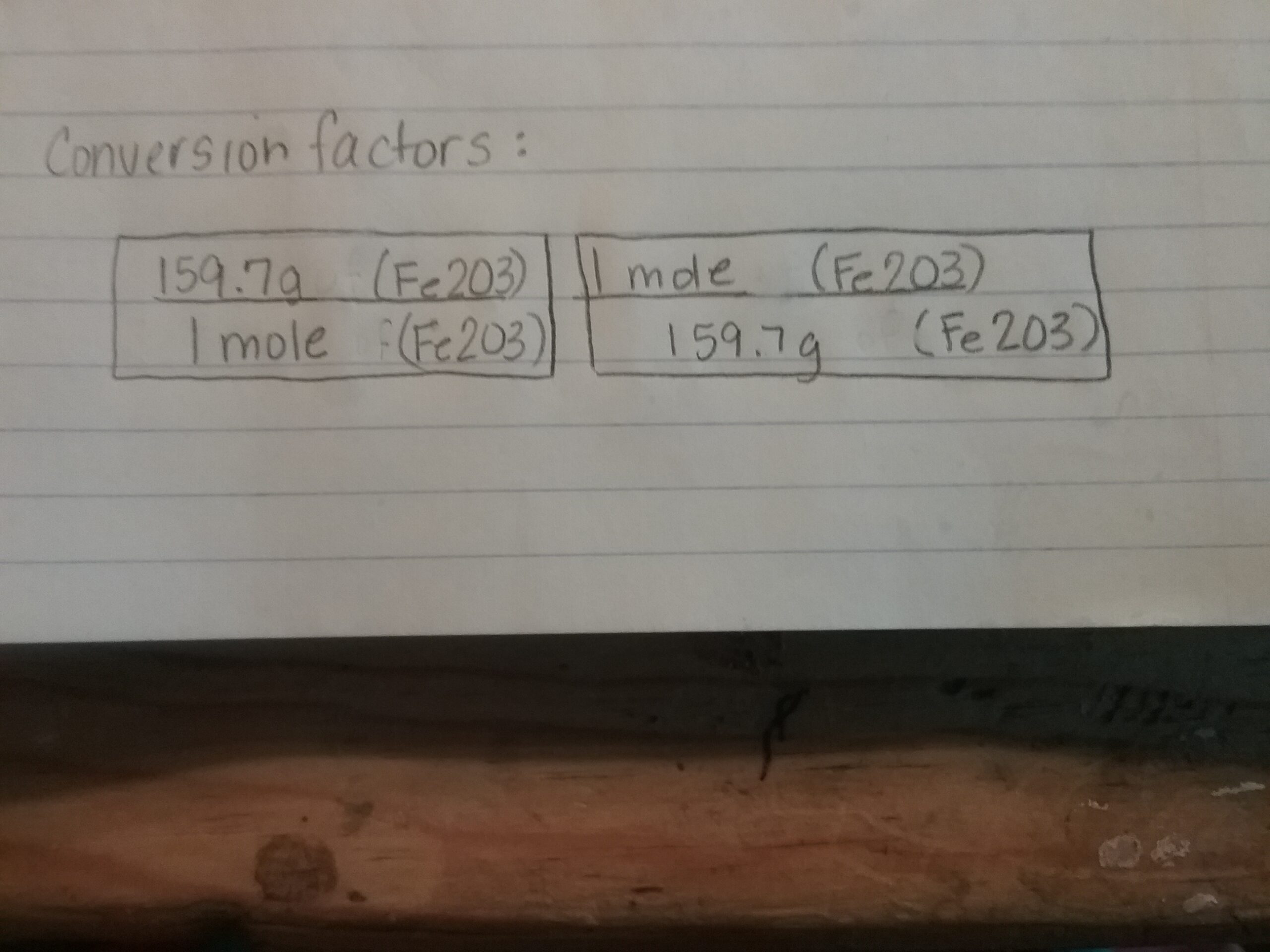Calculating the molar mass of iron is akin to embarking on a journey through the intricate landscape of atomic structures. Just as a cartographer defines the topography of a land with precision, chemists delineate the molar mass of elements to reveal the hidden patterns that govern chemical interactions. The molar mass of an element is determinant of its role in myriad reactions, serving as the nexus by which quantities of matter are equated. Here, we will dissect the methodology of calculating the molar mass of iron, unraveling both the mathematical basis and the intrinsic beauty of this crucial endeavor.
Understanding Molar Mass
To grasp the significance of molar mass, one must first comprehend the concept itself. Molar mass, expressed in grams per mole (g/mol), is defined as the mass of one mole of a substance. A mole is a fundamental quantity in chemistry, embodying approximately (6.022 times 10^{23}) entities, whether they be atoms, molecules, or ions. In the case of iron (Fe), this metric reflects its atomic composition and provides insight into its behavior during chemical reactions.
The Atomic Mass of Iron
The atomic mass of iron is an essential datum collected from the periodic table, that luminary in the field of chemistry, guiding our understanding of elemental properties. Iron has an atomic number of 26, indicative of its 26 protons situated within its atomic nucleus. Correspondingly, the most prevalent isotopes of iron, namely Fe-56, contribute significantly to the average atomic mass, which stands at approximately 55.85 g/mol. It is pertinent to note that isotopic variations result in minute differences in atomic mass; however, for general purposes, we adhere to this average as a cornerstone in our calculations.
Steps to Calculate Molar Mass
Calculating the molar mass of iron is a systematic venture, involving several crucial steps:
- Identify the Element: Begin by recognizing the element in question, which in this instance is iron (Fe). Familiarize yourself with its position within the periodic table.
- Determine Atomic Mass: Locate the atomic mass of iron. For most calculations, you will use the average atomic mass value—55.85 g/mol.
- Consider Isotope Abundance: Should your inquiry require precision, consider the presence of iron isotopes and their natural abundances, especially in applications involving materials science or nuclear chemistry.
- Multiply by Avogadro’s Number: If necessary, to convert between atomic mass units and molar mass, utilize Avogadro’s number ((6.022 times 10^{23}))—though typically unnecessary when using g/mol, it can provide insight into conversions between scales.
This procedural outline serves as a map; however, the nuances of iron, like any elemental journey, unfurl into deeper explorations. It is essential to recognize that, while we arrive at the precise molar mass of iron through calculation, the underlying physical attributes and implications extend far beyond mere numbers.
Applications of Molar Mass
To comprehend why molar mass is indispensable, one must consider its multifaceted applications. Molar mass is not merely an academic concept; it finds itself at the forefront of various practical applications:
- Chemical Reactions: In stoichiometry, the molar mass enables the conversion of mass to moles, permitting chemists to predict the yields of reactions and the concentrations of reactants and products.
- Medical Applications: The molar mass of iron is critical in hematology; understanding its role in hemoglobin elucidates notions regarding anemia and various iron-related deficiencies.
- Industrial Relevance: In metallurgy, knowledge of the molar mass aids in alloy formulation and the production of steel, underpinning structural integrity in construction and engineering.
Intrinsic Beauty of the Molar Mass Calculation
Beyond the pragmatic dimensions lies an aesthetic appreciation for the artistry inherent in calculations. The molar mass of iron depicts the elegance found within atomic structures—akin to the symmetry of a well-composed sonnet, where each element plays a pivotal role. The very act of calculating the molar mass engages with the language of the universe, converting intangible atomic interactions into quantifiable metrics.
The unique appeal of calculating the molar mass of iron transcends its utilitarian aspects. It serves as a conduit linking the minutiae of atomic theory to broader scientific paradigms. As we trace the lineage of iron—from its formation in stellar nucleosynthesis to its current utility in technological advancements—we underscore the interconnectedness of all matter.
The journey of calculating the molar mass of iron not only equips one with the tools to navigate the complexities of chemistry but also evokes a philosophical reflection on the essence of existence itself. Thus, in the seemingly mundane task of molar mass calculation lies the profound narrative of elemental significance, awaiting exploration.












